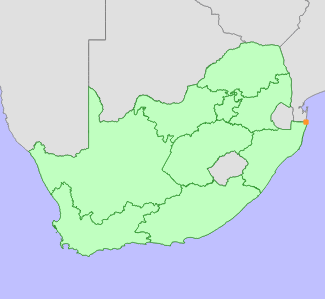Adams, J.B., Veldkornet, D. and Tabot, P. In press. Distribution of macrophyte species and habitats in South African estuaries. South African Journal of Botany.
Ellison, J., Koedam, N.E., Wang, Y., Primavera, J., Jin Eong, O., Wan-Hong Yong, J. and Ngoc Nam, V. 2010. Lumnitzera racemosa. The IUCN Red List of Threatened Species 2010:e.T178846A7625290. http://dx.doi.org/10.2305/IUCN.UK.2010-2.RLTS.T178846A7625290.en, Downloaded on 19 January 2017.
Exell, A.W. 1978. Combretaceae. In: E. Launert (ed). Flora Zambesiaca 4:100-183. Flora Zambesiaca Managing Committee, London.
Hall, A.V., De Winter, M., De Winter, B. and Van Oosterhout, S.A.M. 1980. Threatened plants of southern Africa. South African National Scienctific Programmes Report 45. CSIR, Pretoria.
Hilton-Taylor, C. 1996. Red data list of southern African plants. Strelitzia 4. South African National Botanical Institute, Pretoria.
Raimondo, D., von Staden, L., Foden, W., Victor, J.E., Helme, N.A., Turner, R.C., Kamundi, D.A. and Manyama, P.A. 2009. Red List of South African Plants. Strelitzia 25. South African National Biodiversity Institute, Pretoria.
Rajkaran, A. 2011. A status assessment of mangrove forests in South Africa and the utilization of mangroves at Mngazana Estuary. Unpublished Ph.D., Nelson Mandela Metropolitan University, Port Elizabeth.
Rajkaran, A. and Adams, J. 2015. Mangroves of South Africa. In: J.O. Bosire, M.M. Mangora, S. Bandeira, A. Rajkaran, R. Ratsimbazafy, C. Appadoo and J.G. Kairo (eds.), Mangroves of the Western Indian Ocean: Status and Management (pp. 51-73), WIOMSA, Zanzibar Town.
|
 Comment on this assessment
Comment on this assessment

